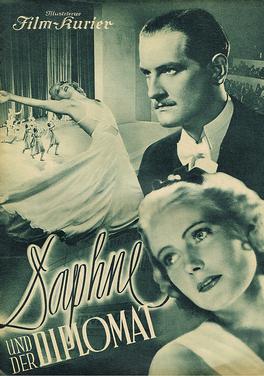
Daphne and the Diplomat is a 1937 German comedy film directed by Robert A. Stemmle and starring Karin Hardt, Gerda Maurus and Hans Nielsen.

The Three from the Filling Station is a 1955 West German musical film directed by Hans Wolff and starring Adrian Hoven, Walter Müller and Walter Giller. It was shot at the Tempelhof Studios in West Berlin and on location around the city. The film's sets were designed by the art directors Kurt Herlth and Hans Kuhnert.
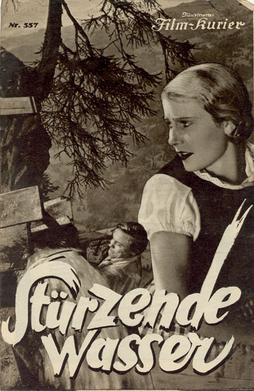
Sacred Waters is a 1932 German drama film directed by Erich Waschneck and starring Karin Hardt, Eduard von Winterstein and Hans Adalbert Schlettow. It was shot at the Tempelhof Studios in Berlin with sets designed by the art director Hans Jacoby. It is part of the heimatfilm genre. The film was based on a novel by Jakob Christoph Heer, which was later adapted into a 1960 Swiss film.

Land Without Women is a 1929 German drama film directed by Carmine Gallone and starring Conrad Veidt, Elga Brink and Clifford McLaglen. It was based on the novel Die Braut Nr. 68 by Peter Bolt. The film is set amongst a community of gold diggers in Western Australia. It was shot at the Staaken and Templehof Studios in Berlin with sets designed by the art directors Hans Sohnle and Otto Erdmann. It was made by the small independent production company Felsom Film using the Tri-Ergon sound-on-film process, the first full-length German-speaking sound film to be released. It was followed a month later by the first all-talking film Atlantik, which had been made in Britain.
Grand Hotel is a 1927 German silent drama film directed by Johannes Guter and starring Mady Christians, Dagny Servaes and Günther Hadank. It was shot at the Babelsberg Studios in Berlin. The film's sets were designed by the art director Erich Czerwonski.

Monna Vanna is a 1922 German silent historical film directed by Richard Eichberg and starring Lee Parry, Paul Wegener, and Hans Stürm.
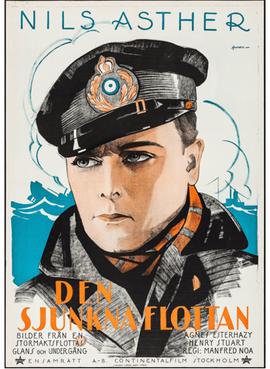
Wrath of the Seas or When Fleet Meets Fleet is a silent war film released in 1926. Directed by Graham Hewett and Manfred Noa and starring Bernhard Goetzke, Agnes Esterhazy and Nils Asther. It portrays the Imperial German Navy during the First World War, particularly the Battle of Jutland and is based on a novel written by Helmut Lorenz.
The Man in the Saddle is a 1925 German silent film directed by Manfred Noa. It was remade as a sound film of the same title starring Harry Piel.
Casanova's Legacy is a 1928 German silent film directed by Manfred Noa and starring Andrée Lafayette, Maly Delschaft and Elizza La Porta.

Love Is Blind is a 1925 German silent comedy film directed by Lothar Mendes and starring Lil Dagover, Conrad Veidt and Lillian Hall-Davis. It was shot at the Babelsberg Studios in Berlin. The film's sets were designed by Hans Jacoby. It was produced and distributed by UFA, Germany's largest film company of the Weimar Era.
The Man with the Fake Banknote or The Man with the Counterfeit Money is a 1927 German silent crime film directed by Romano Mengon and starring Nils Asther, Vivian Gibson and Margarete Lanner.
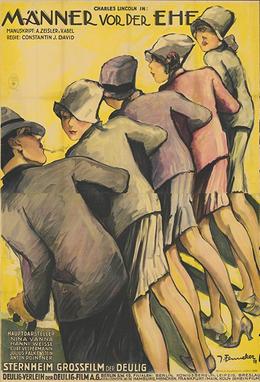
Männer vor der Ehe is a 1927 German silent film directed by Constantin J. David and starring Nina Vanna, Kurt Vespermann and Julius Falkenstein.

Dive is a 1929 German silent film directed by E. W. Emo and starring Igo Sym, Corry Bell, and Paul Samson-Körner.

Artists is a 1928 German silent film directed by Géza von Bolváry and starring Gyula Szőreghy, Anton Edthofer, and John Mylong.
Her Husband's Wife is a 1926 German silent film directed by Felix Basch and starring Nils Asther, Lucy Doraine, and Erich Kaiser-Titz.
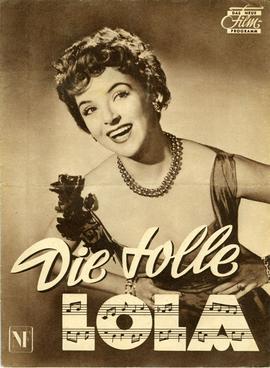
The Great Lola is a 1954 West German comedy film directed by Hans Deppe and starring Herta Staal, Wolf Albach-Retty and Grethe Weiser. The film's sets were designed by the art directors Willi Herrmann and Heinrich Weidemann.

The Road to Paradise is a 1956 French-German romantic comedy film directed by Willi Forst and Hans Wolff and starring Georges Guétary, Christine Carère and Claude Farell. The film is the French version of the 1955 German film The Three from the Filling Station, which was itself a remake of a 1930 film.
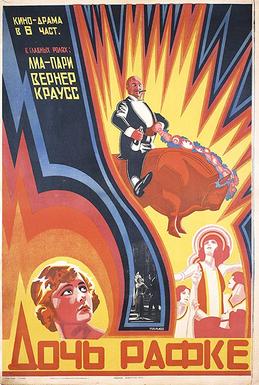
Fräulein Raffke is a 1923 German silent film directed by Richard Eichberg and starring Werner Krauss, Lydia Potechina and Lee Parry. A "Raffke" was Weimar era slang for a money accumulator.
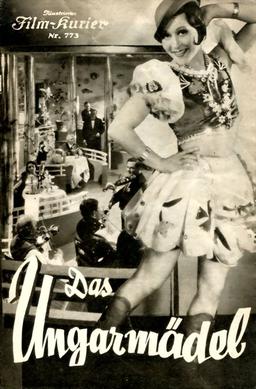
Gypsy Blood is a 1934 German comedy film directed by Charles Klein and starring Adele Sandrock, Georg Alexander, and Erik Ode. It was released by the German subsidiary of Universal Pictures. In Austria it was known by the title Das Ungarmädel.
Letters Which Never Reached Him is a 1925 German silent film directed by Frederic Zelnik and starring Albert Bassermann, Marcella Albani and Mia Pankau.














